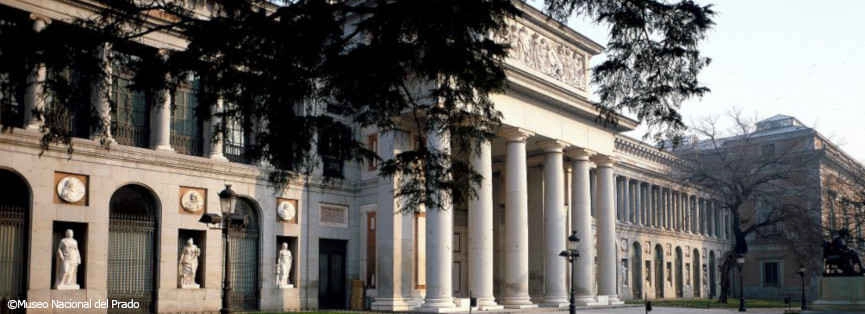Main content
The Prado Museum 2019 Princess of Asturias Award for Communication and Humanities

The Prado Museum (Museo Nacional del Prado) was inaugurated in Madrid on 19th November 1819 as the Royal Museum of Paintings and Sculptures to house works from the royal collections, which had begun to take shape in the 16th century with Charles I of Spain and were enriched by all the monarchs who succeeded him. Soon changing its name to the National Museum of Painting and Sculpture, the museum had an initial collection of 311 paintings, the Museum served as a depository for 1510 other works from the so-called Royal Sites. The museum occupied the Cabinet of Natural Sciences, the work of Juan de Villanueva, in what was known as the Prado de los Jerónimos, for which reason it was popularly called the Prado Museum before receiving its official name at the beginning of the 20th century. Two hundred years after it opened, following several modifications and successive extensions, the Prado Museum continues to fulfil the noble mission of preserving, exhibiting and enriching all the collections and works of art that, closely linked to the history of Spain, constitute one of the highest manifestations of artistic expression of universally recognized value.
Having become the most important cultural institution in Spain and one of the most outstanding art galleries worldwide, the Prado Museum possesses a collection of around 8000 paintings, of which 1700 are on display in the Villanueva building, while more than 3200 are distributed among 255 cultural institutions throughout Spain. Each year, almost three million visitors –more than half of whom are foreigners– pass through its halls. These same halls have served as inspiration to some of the most important painters of the last 150 years, such as Fortuny, Sorolla, Picasso, Monet, Renoir, Durant and Chase.
The Prado is known more as a museum of painters than as a museum of paintings because of the uniqueness of its origins, dependent on royal patronage in the 16th and 17th centuries aimed at gathering as many works as possible from favoured artists. For this reason, the museum has the largest collections of Bosch, Titian, El Greco, Rubens, Velázquez and Goya, in some cases reaching a figure of more than a hundred works. The Bourbon dynasty saw the arrival of the French painters, in an 18th century that was dominated by foreign artists, such as the Italians, until the end of the century, when Goya re-established the pre-eminence of a Spanish artist in court circles. With the confiscation of ecclesiastical properties in the 19th century, acquisitions from the Museo de la Trinidad, which included La Fuente de la Gracia and Auto de fe presidido por santo Domingo de Guzmán, among other works, contributed to increasing the Prado’s collections, which were closed in 1881. Although eminently pictorial, the collections also include exceptional examples of sculpture, the decorative arts and works on paper, from antiquity right up to the 19th century.
Since its foundation, the Prado has acquired more than 2300 paintings, as well as a large number of sculptures, prints, drawings and other pieces through donations, such as Goya’s ‘Black Paintings’; bequests, such as Ramón de Errazu’s collection of 19th-century paintings; and purchases such as El Greco’s The Fable and The Flight into Egypt, Goya’s The Countess of Chinchón and Velázquez’s The Pope’s Barber. Among the most emblematic treasures that can be seen today in the Prado are The Garden of Delights by Hieronymus Bosch, El Greco’s Knight with his Hand on his Chest, Death of the Virgin by Mantegna, Charles V in Mühlberg by Titian, Tintoretto’s Christ Washing the Disciples’ Feet, Dürer’s Self-portrait, Las Meninas by Velázquez, The Three Graces by Rubens, Charles IV of Spain and His Family by Goya and The Execution of Torrijos and his Companions on the Beach at Malaga by Gisbert.
The current museum is made up of several buildings –the Villanueva building, the Claustro de los Jerónimos, the Casón del Buen Retiro, the administrative building on Calle Ruiz de Alarcón and the Salón de Reinos del Palacio del Buen Retiro– which together exceed 45 000 square metres of floorspace. As a public body, it is regulated by a specific law and is governed by a Board of Trustees chaired by the corresponding Minister of Culture and whose honorary presidents are Their Majesties The King and Queen of Spain.
End of main content
